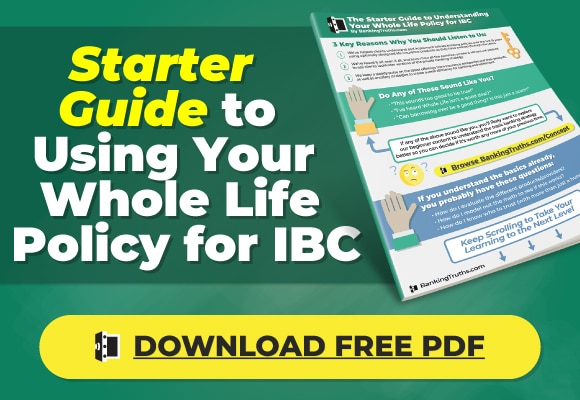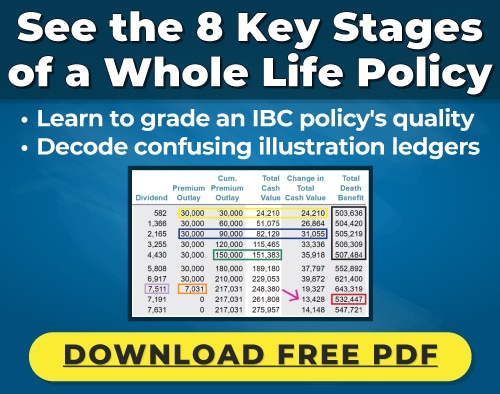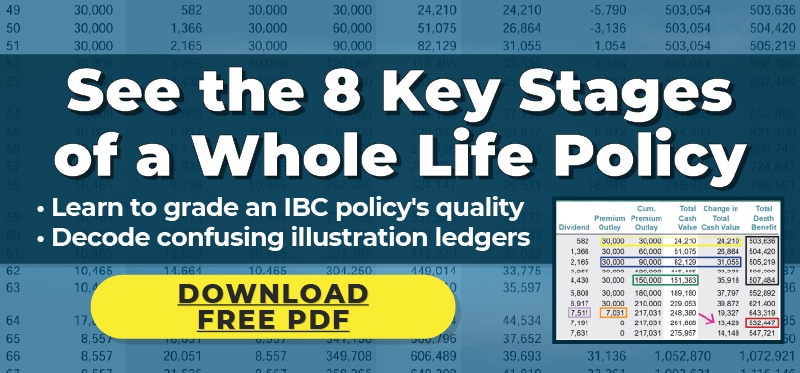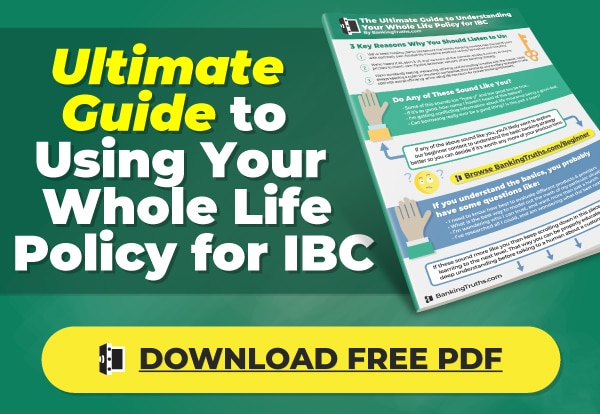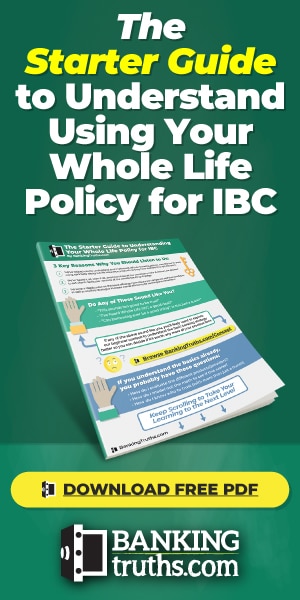10 Red Flags With Infinite Banking
Curious about Infinite Banking but wary of the hype? In this video, Hutch reveals the biggest red flags in the industry—from misleading sales tactics and weak policy designs to flawed borrowing strategies and overhyped “philosophy-first” approaches. Learn how to avoid common pitfalls and make smarter, math-backed decisions for your financial future.
The Red Flags of Infinite Banking: What Most Agents Won’t Tell You
Hey, this is Hutch with BankingTruths.com, and today I want to address something that’s been bothering me for a while: the red flags of infinite banking. Unfortunately, there are some less-than-scrupulous sales tactics happening out there, and clients often don’t find out until years later—after they’ve sunk 2, 5, 7, or even 10 years into policies that aren’t serving them well.
Let’s dive into the biggest red flags I’ve seen over the years.
Red Flag #1: Philosophy Over Math—And the Shame Game
Some agents focus so heavily on the philosophy of infinite banking that they shame clients for asking about the details of the actual policy. They’ll say things like, “It’s not about the numbers—it’s about the concept.” If you start asking specific questions about the company, the policy design, or the mechanics behind your private banking strategy, they make you feel like you’re doing it wrong.
But let’s be real: If your agent is a financial professional, shouldn’t they be comfortable discussing the math? The truth is, glossing over the details simplifies their sales process. It’s easier for them to just say, “Trust me,” and sell you a policy based on vague philosophical ideas.
Red Flag #2: Ignoring Company Financials and Structure
We do a ton of competitive analysis at BankingTruths.com. Looking beyond sales anecdotes, we dive into the actual financials—company balance sheets, investment allocations, assets, and liabilities—because company strength matters.
Clients typically prefer older, more established true mutual companies. Why? Because history shows that companies structured as mutual holding companies (MHCs)—which technically are still owned by policyholders—can sometimes shift direction. Just look at what happened with Ohio National or other companies that transitioned from true mutual status to stock companies over the past couple of decades.
If you want to learn more about mutual vs. mutual holding companies, check out bankingtruths.com/mutual.
Red Flag #3: The “No Banks Ever” Philosophy Trap
Some agents preach that you should never use banks again—because that’s what the “Old Testament of Infinite Banking” says. Sounds great in theory, right?
But in practice, it’s impossible.
You still need a bank account to pay your premiums. Insurance companies deposit loan proceeds into your bank account. The reality is, banks aren’t going anywhere, and they can still be useful—especially when it comes to sourcing outside lines of credit at lower interest rates.
For example, during most of the last decade, our clients accessed loan rates in the 2-3% range using outside lines of credit, compared to 5-7% or higher from policy loans. Don’t let philosophical dogma block you from making smart financial decisions.
Red Flag #4: Obsession with High Early Cash Value
When agents are forced to show numbers, they’ll often lean hard on showing the highest early cash value as if that’s the most important metric. But you know what has the highest early liquidity? Actual cash.
Yes, some policies may offer 90%+ early cash value, but that’s still less than cash, which is 100% liquid. Plus, high early cash value policies often underperform in the long run. Over 10-20 years, the better-designed, long-term-focused policies can leave you with six or even seven figures more in total cash value.
What we recommend:
Start with a smaller policy if you’re worried about liquidity.
Or, fund your policy incrementally—”limp in now, max fund later.”
Prioritize long-term performance over short-term cash access.
Red Flag #5: Over-Borrowing Too Early
Some agents encourage clients to “get your money working immediately” and borrow aggressively against their policies right away.
This doesn’t work.
Every whole life policy requires you to take a step back in the early years before moving forward. Borrowing heavily in years 1-3 can create sustainability issues. We’ve had many clients come to us 5, 10, even 15 years later stuck in policies that are imploding due to bad early borrowing habits.
Red Flag #6: Using Policies to Pay Off High-Interest Debt (or Worse, Your Mortgage)
Using a whole life policy to pay off consumer debt, especially high-interest credit card debt, is a terrible idea. You’re essentially financing your debt payoff at life insurance loan rates—often 5-7%—instead of tackling the debt head-on.
Same with low-interest mortgages. If you’re locked into a mortgage in the 2-3% range, why would you pay that off only to take a policy loan at a higher rate?
If an agent is telling you this is a good idea, their ethics—and their math—are out of whack.
Red Flag #7: Borrowing to Buy More Policies
We’re also seeing a new trend where clients are encouraged to borrow against one policy just to buy another, and then another. It becomes a borrow-and-spend cycle with no end in sight.
Even worse, some of this is now being packaged with dubious tax planning strategies involving shady trust setups. If someone’s telling you that setting up an obscure, expensive trust will make all your policy loans tax-free—even if the policy is a MEC (Modified Endowment Contract)—run away. The Department of Justice has already gone after promoters of these schemes, and clients were left with back taxes and penalties.
We cover this specific scam in detail at bankingtruths.com/1041.
Red Flag #8: Misleading Loan Recognition Talk (Direct vs. Non-Direct)
Agents often spin the direct vs. non-direct recognition debate to suit their sales narrative. The truth? Both types have trade-offs, and no, paying higher interest doesn’t secretly help you.
We have a full explainer video on direct vs non-direct recognition if you want to dig deeper.
Our Approach: Real Math, Real Transparency
For over a decade, we’ve stuck with two top-performing true mutual companies for 90%+ of our cases. Why? Because their policies continue to deliver as promised—even as interest rates have fluctuated. We’ve never had sweetheart deals with any company, and we stay independent so we can give our clients honest, competitive advice.
We also customize plans based on your family structure, underwriting class, and specific goals. Sometimes we even recommend splitting policies across different companies for diversification.
A Smarter Path: 4D Banking
We’re currently working on a book about a concept we call 4D Banking, which takes the best of infinite banking but applies it across multiple asset classes. If borrowing against compounding assets works well with insurance, why wouldn’t you integrate that same principle across other assets?
Our 4D Banking model focuses on creating a network of compounding streams—not just being locked into one insurance carrier or one philosophy.
Want a Second Opinion?
If you’re already in a policy and wondering if it’s working for you—or if you’re just starting to explore infinite banking—trust your gut. If something feels off, it probably is.
You can:



Thanks for reading! And apologies if I seemed a little fired up—this is a topic I’m passionate about, especially after hearing some misinformation being spread about me on other podcasts lately. But hey, our story hasn’t changed in over two decades, and we’re not going anywhere.
Meanwhile, all this talking out of both sides of, of the mouth is happening all the time. And, uh, yeah, that’s not being called out. And who knows? I don’t know enough about their business model to know if they are guilty of some of the things I’m talking about here. But I feel very good about the way that we’ve done business over the last.
Couple decades, our story hasn’t changed. You can look up all our own content. Uh, we, we got the same message and we’re not going anywhere anyway, hope to talk to you soon.

John “Hutch” Hutchinson, ChFC®, CLU®, AEP®, EA
Founder of BankingTruths.com
